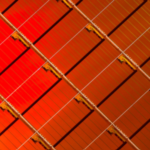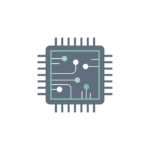Two new automotive-grade 40V N-channel power MOSFETs have been introduced by Toshiba Electronics Europe that are appropriate for the design of next-generation automobiles. The XPQR3004PB and XPQ1R004PB devices both make use of the L-TOGLTM, or large transistor outline gull-wing leads, packaging configuration. The recently developed Toshiba power MOSFETs are particularly optimized for handling huge currents because of their L-TOGL packaging and the improved heat dissipation properties derived. They both have high on-resistance values (0.3m for the XPQR3004PB and 1m for the XPQ1R004PB), as well as high drain current ratings (400A for the XPQR3004PB and 200A for the XPQ1R004PB, respectively).
On these devices, there is no internal post structure (solder connection). An inventive copper clip is used to join the source and exterior leads in order to achieve this. When compared to the current TO-220SM(W) package, the adoption of a multi-pin configuration for the source leads reduces package resistance (and related losses) by around 70%. The XPQR3004PB’s resulting drain current (ID) rating is a 60% improvement over the TKR74F04PB, which is currently housed in a TO-220SM(W) package. The thick copper frame also significantly lowers the thermal impedance from the connection to the casing. For the XPQR3004PB, it is 0.2°C/W, whereas for the XPQ1R004PB, it is 0.65°C/W. This improves reliability, decreases operating temperatures, and eases heat dissipation.
The XPQR3004PB and XPQ1R004PB power MOSFETs are both AEC-Q101 rated and intended for use in severe automotive applications at temperatures up to 175°C. Their gull-wing leads lessen mounting tension and provide simple visual inspection, which helps to increase the reliability of the solder junction. The XPQR3004PB and XPQ1R004PB power MOSFETs enable designs to be simpler and the number of MOSFETs required to be lower when utilized in high-current automotive applications, such as semiconductor relays or integrated starter generators (ISGs). Size, weight, and cost reduction are all aided by this.







